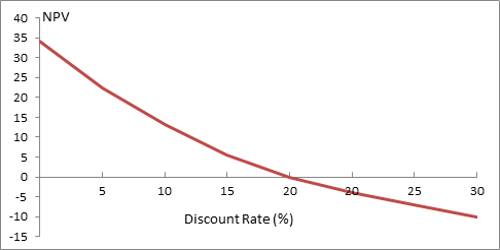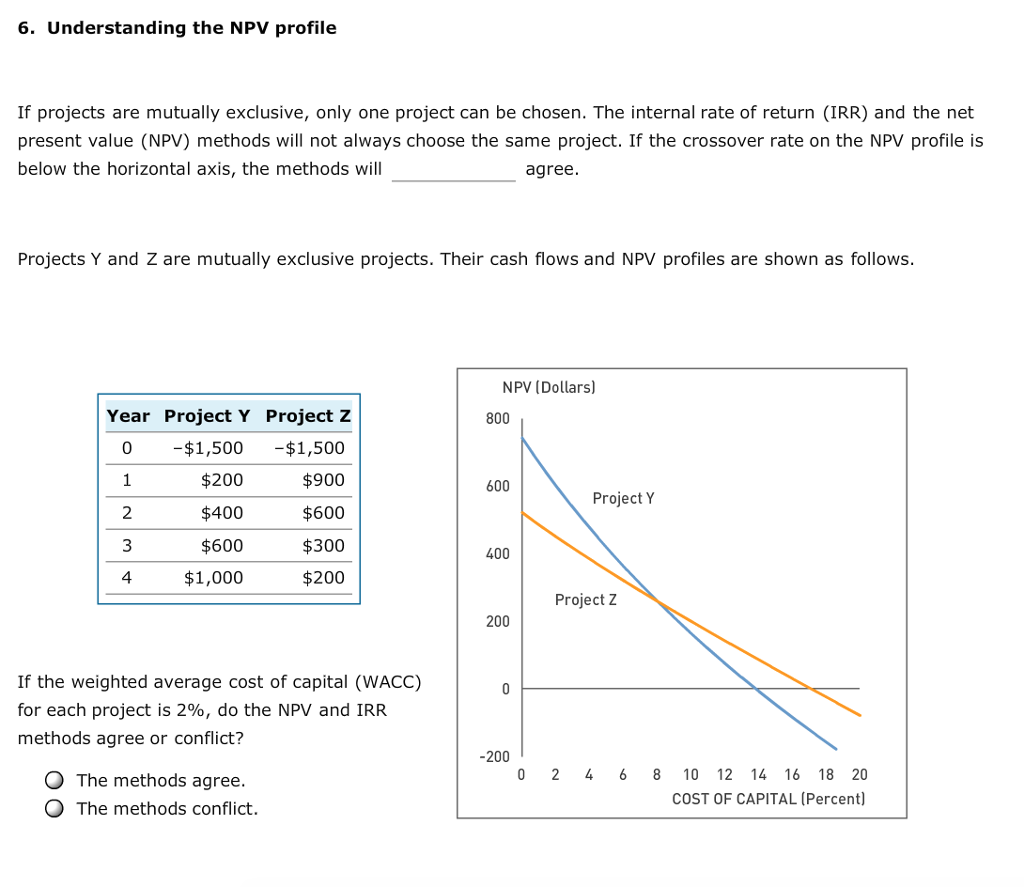
NPV is widely used in capital budgeting to evaluate the profitability of potential investments in long-term assets, such as machinery, equipment, and real estate. Subtract the result from the cost of the initial investment to get the NPV. If the result is less than zero, the company would lose money by going forward with the investment. For example, IRR could be used to compare the anticipated profitability of a three-year project with that of a 10-year project.
Net Present Value (NPV) Calculation
The profitability index is the ratio of the present value of cash inflows to the present value of cash outflows. A profitability index greater than one indicates a profitable investment or project. NPV is sensitive to changes in the discount rate, which can significantly impact the results.
What is the importance of net present value in financial decision-making?
This project is expected to generate cash flows of $160 million for the next four years. Net present value (NPV) tells you the value of a stream of future cash flows, discounted by a factor, in today’s dollars. Companies often make decisions based on NPV, such as whether to purchase an asset or initiate a project. An NPV profile is a chart that displays the effect of different discount factors on NPV. You can create an NPV profile in Excel or perform the calculation by hand.
Investment Appraisal
NPV is the result of calculations that find the current value of a future stream of payments using the proper discount rate. In general, projects with a positive NPV are worth undertaking, while those with a negative NPV are not. Calculating NPV involves computing the present value of each cash flow and then summing the present values of all cash flows from the project.

However, in the case of two mutually exclusive projects, sometimes the decision rules will draw different conclusions. For example, project X might have a larger NPV than project Y, and project Y, a larger IRR. This conflict usually stems from differences in the cash flows of the two projects, which leads to a different ranking between the NPV and IRR. Whenever this conflict arises, the NPV, and not the IRR, should be used to select the project to invest in. In summary, exploring the NPV profile helps decision-makers understand the trade-offs between risk, cash flow predictability, and project duration. By examining its components, we gain valuable insights into investment project dynamics.
Finance Strategists has an advertising relationship with some of the companies included on this website. We may earn a commission when you click on a link or make a purchase through the links on our site. All of our content is based on objective analysis, and the opinions are our own. Based in Greenville SC, Eric Bank has been writing business-related articles since 1985. Read this section that discusses Net Present Values (NPV), calculating and interpreting NP, and the advantages and disadvantages of using NPV. It also gives examples of how these concepts are implemented in practical applications.
Because the equipment is paid for upfront, this is the first cash flow included in the calculation. No elapsed time needs to be accounted for, so the immediate expenditure of $1 million doesn’t need to be discounted. It embodies the essence of informed decision-making—a blend of financial acumen, risk assessment, and strategic foresight. As we harness its power, we navigate investment waters with clarity, guided by the NPV compass. Mastering the NPV profile empowers decision-makers to assess investment opportunities rigorously.
By combining quantitative analysis with qualitative insights, organizations can make informed choices that align with their strategic goals. Remember, the 3 5 cost of sales isn’t just a financial tool; it’s a compass guiding us through the complex landscape of investment decisions. The Net Present Value (NPV) profile is a crucial tool used in financial analysis to evaluate the profitability of an investment project over time. It provides insights into the cash flows generated by the project and helps decision-makers assess its viability. Consider project A which requires an initial investment of $400 million.
- By plotting the NPV against different discount rates, we can gain insights into the project’s risk and return characteristics.
- The formula for calculating NPV involves taking the present value of future cash flows and subtracting the initial investment.
- Other tools used are IRR, profitability index, payback period, discounted payback period, and accounting rate of return.
- Consider a scenario where there are two projects which are mutually exclusive.
Cost of capital begins at zero percent at the origin and increases linearly as you move to the right. Businesses can use NPV when deciding between different projects while investors can use it to decide between different investment opportunities. The NPV formula doesn’t evaluate a project’s return on investment (ROI), a key consideration for anyone with finite capital. Though the NPV formula estimates how much value a project will produce, it doesn’t show if it’s an efficient use of your investment dollars. This concept is the basis for the net present value rule, which says that only investments with a positive NPV should be considered. In summary, plotting the NPV Profile provides a holistic view of a project’s financial viability.
They should avoid investing in projects that have a negative net present value. For this example, the project’s IRR could—depending on the timing and proportions of cash flow distributions—be equal to 17.15%. Thus, JKL Media, given its projected cash flows, has a project with a 17.15% return. If there were a project that JKL could undertake with a higher IRR, it would probably pursue the higher-yielding project instead. Both of these measurements are primarily used in capital budgeting, the process by which companies determine whether a new investment or expansion opportunity is worthwhile.
In summary, NPV provides a rigorous framework for evaluating investment projects. By considering cash flows, discount rates, and risk, decision-makers can make informed choices that maximize value for stakeholders. Remember, NPV isn’t the sole criterion, but it’s a crucial piece of the investment puzzle. To do this, the firm estimates the future cash flows of the project and discounts them into present value amounts using a discount rate that represents the project’s cost of capital and its risk. Next, all of the investment’s future positive cash flows are reduced into one present value number. Subtracting this number from the initial cash outlay required for the investment provides the net present value of the investment.
